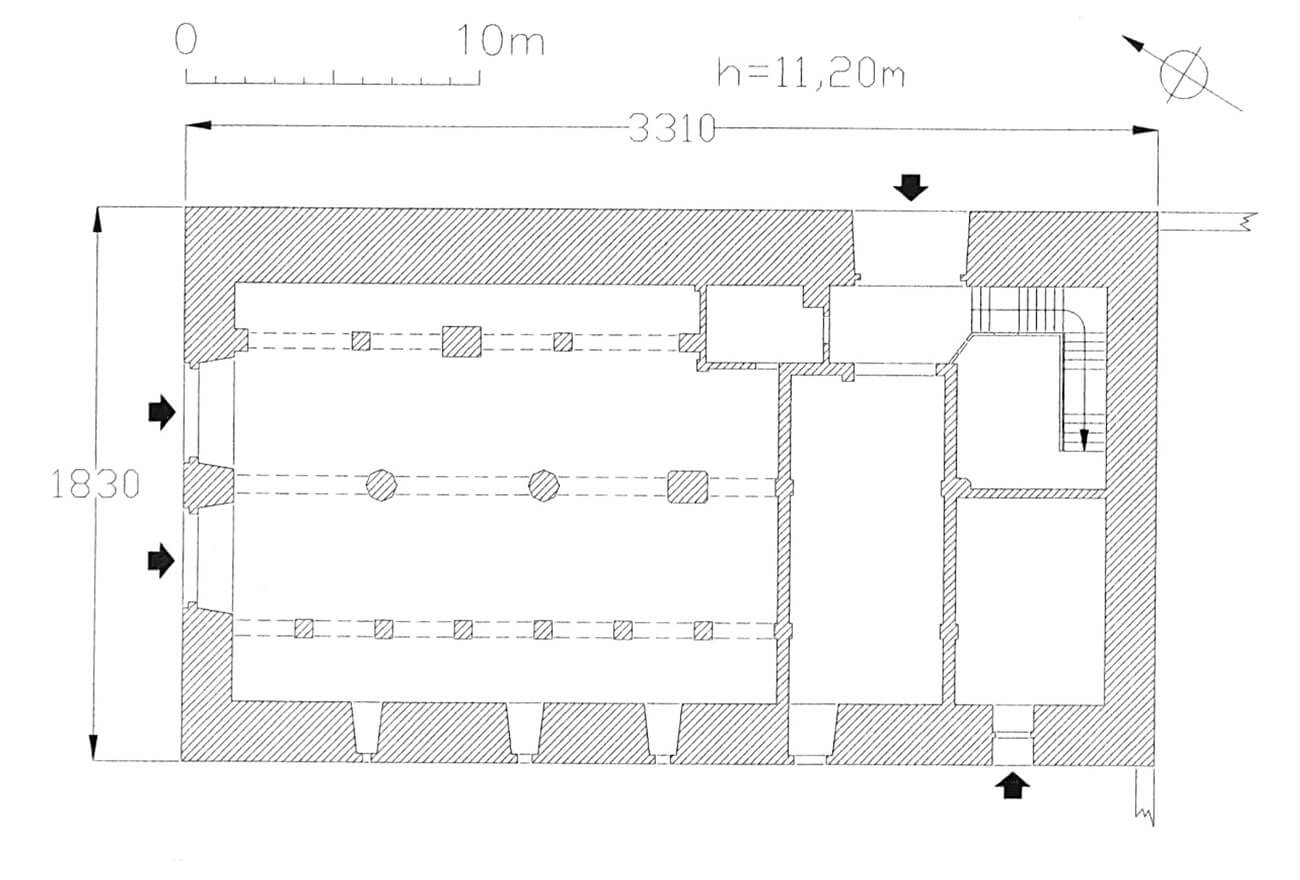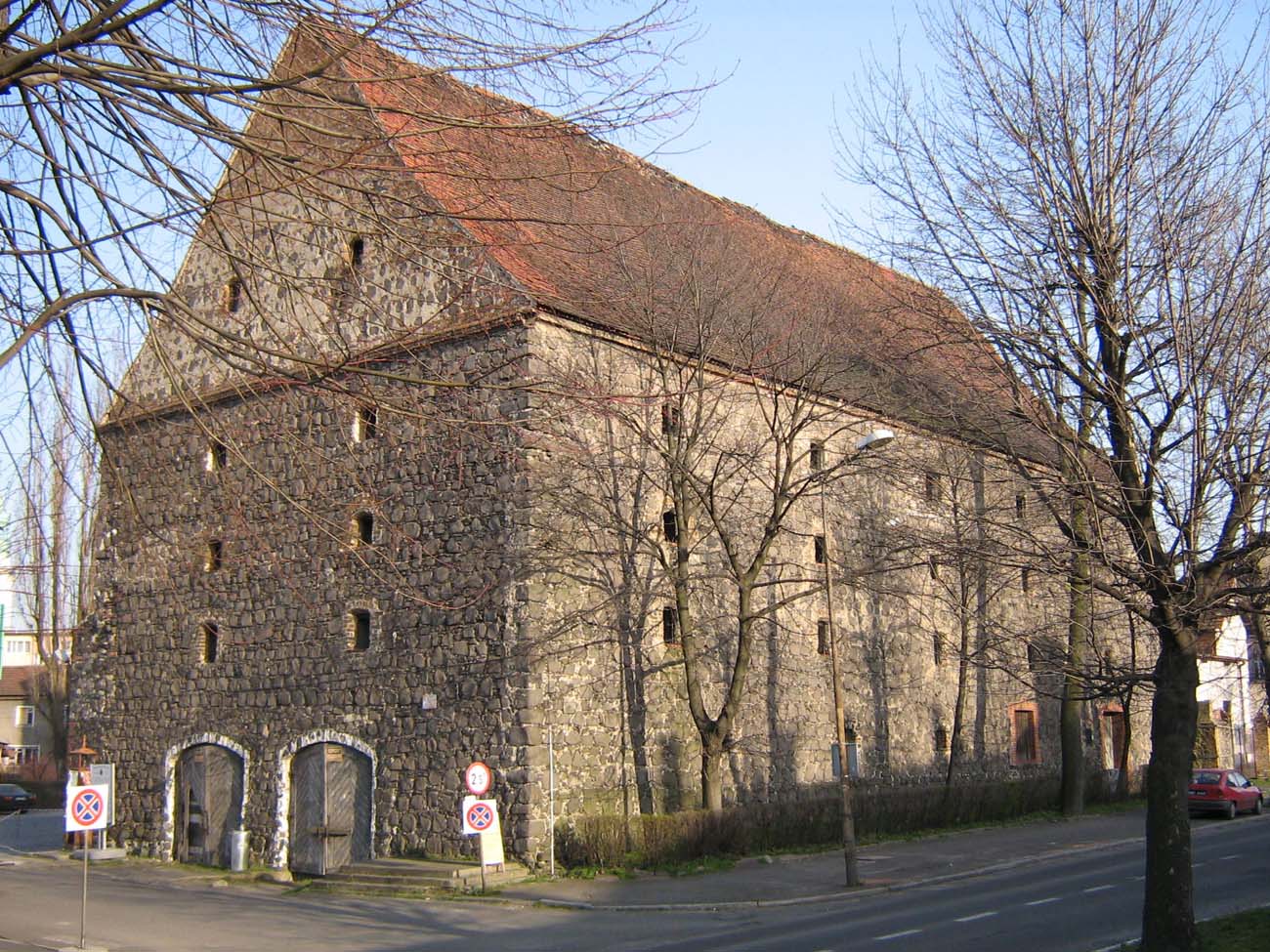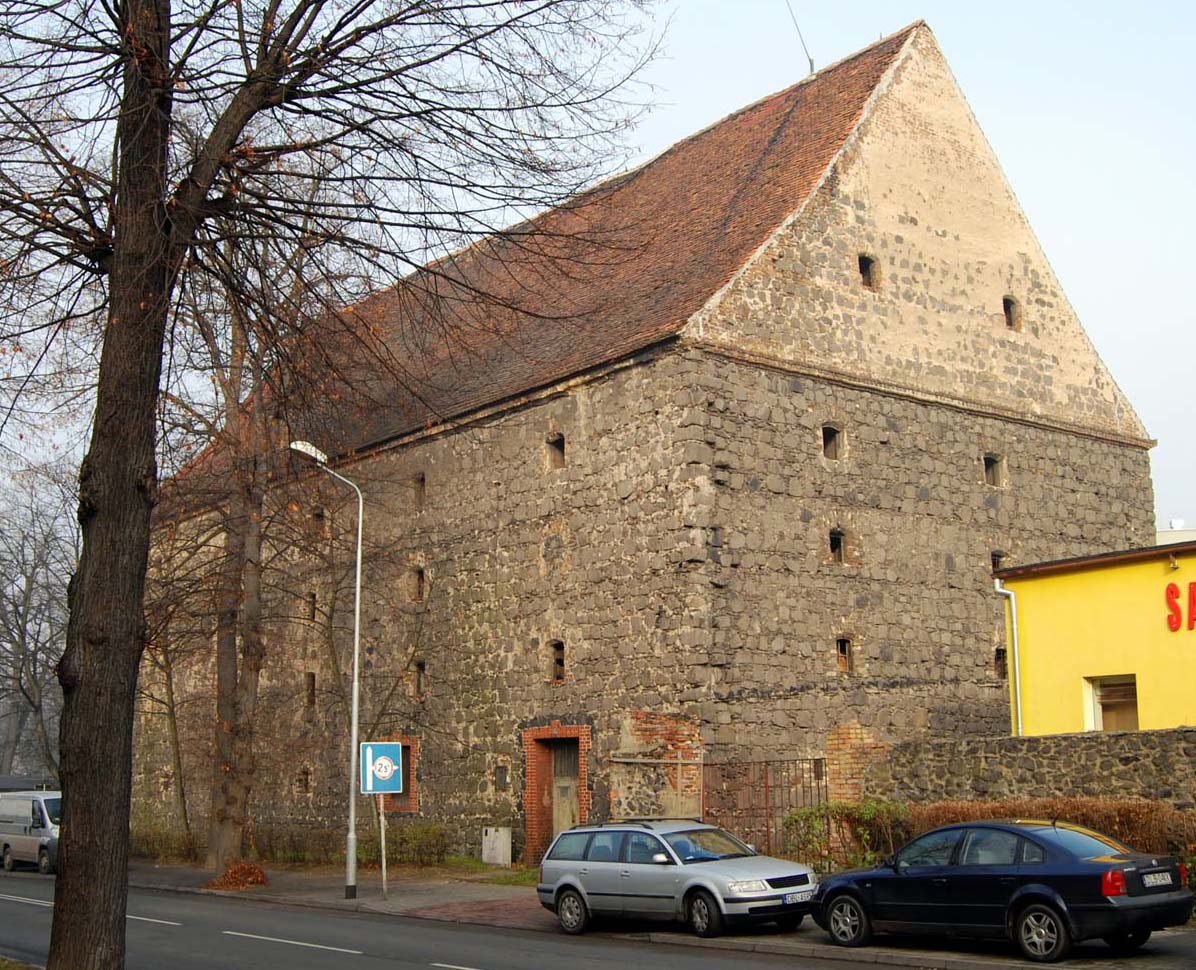History
The granary or warehouse called the Salt House or the Grain House, was erected next to the defensive walls in the years 1537-1539. The works began after the town council bought the land between the town gates, belonging to a certain Ludwig Flössel. This area was originally used to store salt brought to the Lubań, from which the building received its name (Lubań received a very profitable salt privilege as early as 1291, thanks to which the town council had the exclusive right to trade in salt). Initially, the building was to be used to store grain. Supplies were stored in it in the event of wars or plagues, but it also played a role as part of the town’s defense system.
In 1554, the building was damaged for the first time during the great fire of the town. In 1556, the granary was raised by one floor, and once again its walls were raised in 1698, while the vault that was to be built on the new floor collapsed during the works. Due to its safe location, it was one of the few buildings that survived the fires of the town in 1659 and 1760. In 1807, during the wars fought by Napoleon, a prison for soldiers was established within the walls of the warehouse, and in the first half of the 20th century it served as a fire station. Currently, it remains undeveloped.
Architecture
The granary was situated on a hill in the western part of the town, in the area of the zwinger of fortifications, that is, between the higher and lower lines of the defensive walls, between the Bracka and Zgorzelecka gates. This location was caused by fire safety considerations, as high walls effectively separated the building from the mostly timber buildings of the town, and also protected it against flooding.
The Salt House was erected on a rectangular plan measuring 33.8 x 18.4 meters from irregular basalt stone and erratic pebbles joined with lime mortar with an admixture of clay. The northern wall was co-created by the inner defensive wall. Ultimately, building reached a height of 22 meters, housing four floors and an attic, covered with a gable roof based on triangular gables. Numerous but small windows on the west, south and north sides could be used as loop holes if necessary. It were created at regular intervals, in the same axes. Only the eastern wall, adjacent to the defensive wall, was completely devoid of openings. Smooth, austere external façades, due to the utilitarian purpose of the building, were devoid of decorations.
Inside, all the warehouse ceilings received a wooden structure and rested on wooden poles. The individual levels were connected by stairs in the form of ladders leaning against the ceiling beams. There was a crane installed inside the warehouse in Lubań, which enabled loading and unloading of goods. Originally, there had to be a room for the writer and a weight room on the ground floor. The main entrance in the form of two identical, segmental portals was created on the north side of the building.
Current state
The Salt House, although located in the area of a town often troubled by fires and transformed in the early modern period, has been preserved in a relatively good condition, being one of the few preserved buildings of this type in Poland. It is distinguished by large dimensions and raw, unplastered outer facades. The interiors of the upper storeys are in a condition similar to the original one, i.e. they are covered with ceilings and separated by wooden posts. The ground floor has been transformed several times, so today it is divided into a northern part for storage and smaller rooms in the southern part. No elements of the equipment have survived, apart from a simple timber device, which may have been used to transport grain in the attic. Unfortunately, Salt House currently remains abandoned and the area around it is largely used as a parking lot.
bibliography:
Biała karta ewidencyjna zabytków architektury i budownictwa, Dom Solny, E.Sawińska, nr 4255, Lubań 2000.
Tekiela Ł., Mury obronne. Dom Solny, Lubań 2014.



